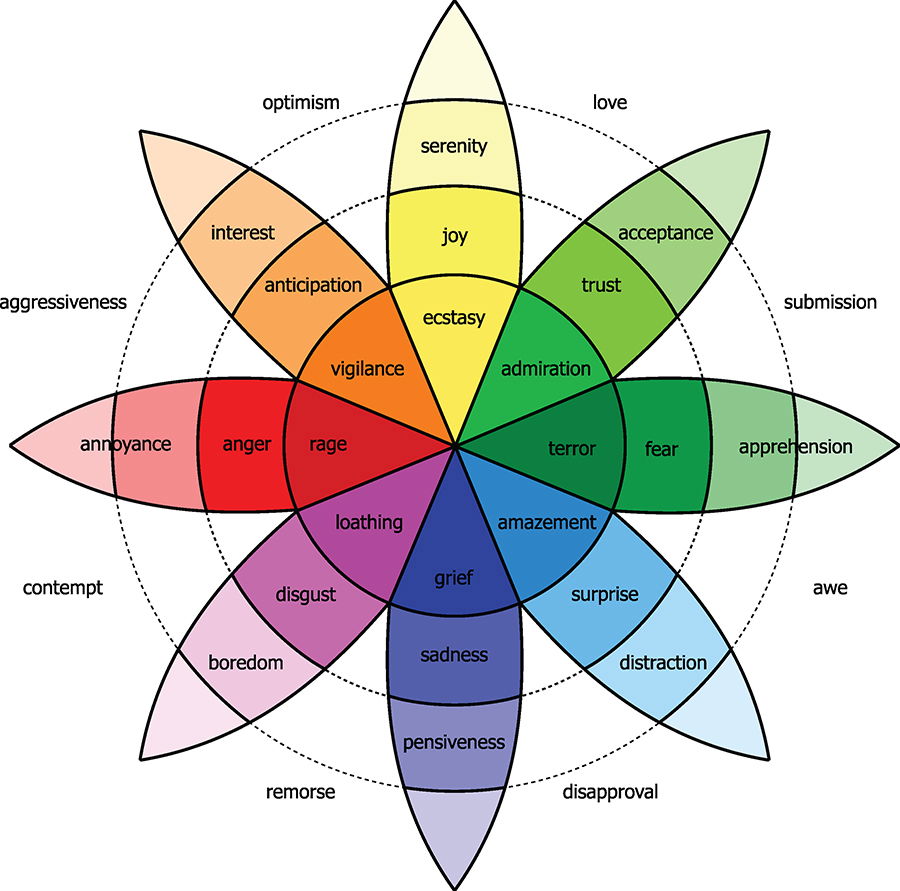Is Your Law Firm’s Website Doomed to Fail?
BY Jason Bland

LISTEN
Your law firm’s website is more than an advertisement. Your website is your next client’s first impression of your firm. It is what someone will see after their friend refers them. It is going to shine a light on your successes and deliver the revenue you need to take your firm to the next level.
Or it will fail.
Too often, law firms look at their websites as accessories, the importance of which is on par with the drapes, lobby furniture or the weight of paper to use for business cards. A site’s importance is much greater than that, and failing to understand why websites fail could predestine the outcome of yours. Here we dig in and find out why bad websites do not deliver.
Why Generic Websites Fail
Have you ever been driving through a rural area and decided that you need a snack? Upon exiting the interstate, you see an old poorly lit grocery store in a scarcely populated parking lot. When you go inside, you find yourself walking among all the basic elements you are looking for, a cooler with beverages, packages of various consumables, maybe even a produce section. But the flickering halogen light bulbs, brown wood panel walls and narrow isles do not invite you to browse around. Instead the store interior screams “get what you need and get out.”
Your templated website is that poorly lit grocery store. It might have all of the items inside that the visitor is looking for – a practice areas section, a contact page, some information about the attorneys and a few results. But the style in which all of that is presented is telling the visitor to “get out.”
Unlike the solo grocer off the highway, you do not have the luxury of a regional monopoly. Leaving your website does not mean another hour of driving hungry; it is just a simple click back to the search results page where other law firms are ready and willing to give searchers the information and experience they are looking for. In fact, the user spent so little effort getting to your site, they are in no way attached to staying there.
Templates Look Like Templates
Over the years, we have had the good fortune of conducting many focus groups for law firms. Focus groups consist of people who have hired a lawyer in the region and practice area they are reviewing.
During the session, they interact with a design prototype and participate in a number of exercises. The clients’ competitors play an important role in the focus group and are involuntary participants in a group critique. The session is designed in a way that keeps our focus group from knowing which law firm they are working for until half way through the session. This minimizes the response bias of participants wanting to please the tester (our client).
If participants are drawn to a competitor instead of our client, we need to know why. If they gravitate to our client, that is nice to brag about, but we are really looking for valuable feedback like “would you contact this firm” and “why” or “why not?”
During these focus group sessions, we sometimes look deep into the search results to pull out a site that is powered by a DIY builder or a generic theme. Here is how the test works:
1) We show the websites being tested with the law firms’ logos and contact information.
2) We blur all conversion statements (i.e.: won over $200 Million, free consultation, 30 years experience).
3) We ask the participants to make a decision on design alone.
Once they make their decision, we ask why. Then, they get to see the same websites without any content redacted and pick again. Here is the amazing part, about 50 percent of the time people will change their “who would you call” answer. However, template websites that have text that show better results are generally not picked. People tend to gravitate toward well designed sites even if there is another law firm with bigger settlements or more experience.
In one case, a participant chose our young client over a law firm that had more lawyers, more experience and boasted a high success rate in DUI dismissals.
People say that results and experience are what matter most, but when you set a timer, the decision comes down to the first impression.
In the case above, when asked to explain the selection, the participant said the competing firm did not look reliable. The fact that their website was a GoDaddy builder site, according to a logo in the footer, made participants question the credibility of all the law firm’s claims.
Another templated site that was under review did not have a credit in the footer to giveaway its templated origin. But the generic theme (while newer and responsive) still resulted in a participant saying, “I couldn’t tell if they were still in business” and another one going so far as to say, “They didn’t look like a real law firm.”
In a follow up question, the participants were unable to pinpoint what exactly led them to that conclusion.
Emotional Ignorance Fails
In 1980, psychologist and professor Robert Plutchik created the Wheel of Emotion as a way to illustrate his theory of emotion. Plutchik believed that there were eight bi-polar emotions. For example, ecstasy is the polar opposite of grief. Trust is the polar opposite of disgust.
The Wheel of Emotion

A fascinating piece of Plutchik’s Wheel of Emotion is how unchecked emotions can become stronger emotions. The unchecked feelings are more intense as you get deeper into the core.
For marketers, the Wheel of Emotion can be seen as a warning sign for what unchecked emotions can become. This is especially important with your website. Whether you intend it or not, your website will evoke an emotional response.
Let’s take a journey through the Wheel of Emotion as your visitor is searching for an attorney.
If your website visitor was arrested for driving while intoxicated, then it is safe to say that they are in an emotional state of fear or anxiety. You could focus on all of their worst fears like never driving again, going to jail and never being able to afford car insurance. That might encourage them to hire a lawyer, just not one from your firm. On the other hand, if your website invokes feelings of credibility, you could move the visitor away from fear and toward trust.
Your website can also run the risk of giving visitors such an awful experience that they start out in a state of fear from their own legal matter and then quickly jump to a state of annoyance. When users find your website annoying, that emotion can turn into anger and then rage, which can push visitors to leave the site.
Alternatively, a website can be dull and generic. This would move the visitor down to boredom which ultimately ends in loathing. It is safe to assume that nobody is calling the law firm they loathe.
This emotional mobility is not something that takes a long time to transpire. It happens instantaneously.
You may have experienced this. You start out in a place of interest when clicking on a news article. Then a video ad starts playing, a subscription pop-up interrupts your read, or you are required to take a survey to keep reading. In a matter of milliseconds you have moved from interest to rage and cannot leave the site fast enough.
The two paths to avoid are feelings of annoyance and boredom.
Annoyance is often triggered by:
- Interruptions to the experience with pop-ups or notifications
- Audio or video that auto plays
- Confusing menus and navigation
Boredom is often triggered by:
- Generic imagery like court rooms and bookshelves
- Low quality stock photos
- No value added to the user experience with useful content, answers to questions, or useful information on practice areas or the attorneys at your firm.
Understand both the emotional state that your visitors are in when searching for an attorney as well as how your website will invoke certain emotions once they are a visitor.
Too Much Creativity Fails
Psychologists Chip Heath and Amos Tversky published a widely cited paper in 1991 titled “Preference and Belief: Ambiguity and Competence in Choice under Uncertainty.” Through their experiments, Heath and Tversky revealed that people are averse to unfamiliarity more than increased risk. In the study, participants were asked to pick between two bets. More often, people would pick a bet that was familiar to them even if the odds of winning were lower.
This bias toward the known, regardless of risk, is also present in investing habits. Professional fund managers tend to stick with equities they know, even if those investments underperform.
Cognitive biases dictate everything from what we read, the friends we make, the route we drive home, the brands we buy, where we eat, and the split second decisions before handing over our money. We are wired to feel safe around familiar things.
Sometimes, designers may go too far out of the box to create an experience that is fresh, revolutionary and so far from the norm that it frightens our primitive instincts.
Entering a website that functions in a way you are unfamiliar with will leave you feeling confused. If it is not immediately obvious what you should do, you will take a ride on the Wheel of Emotion starting in the “annoyance” column.
This may sound like a counter argument to the case I made earlier against templated generic websites. After all, there is nothing more familiar than something you have seen 1,000 times. It is not that simple.
Familiarity is about comfort. Experiencing something negative, like a poor user experience, does not make it preferable because you have now endured it; it means that you are drawn to things that offer the comfort of familiarity. Return to a bad experience offers no comfort.
On a website, that means putting certain elements where users expect them. Users, for example, look for a contact link at the top right. They will expect obvious cues to tell them something is clickable, flippable, slide-able or tappable.
Users will look for familiar icons such as the right pointed triangle of a play button over a video, the three horizontal lines that represent a menu on a mobile website or a wide downward pointing arrow that tells the user to scroll. These are all familiar elements that people expect when arriving on a site.
Creativity and stand-out design is good for your brand, your visitor and your conversions. But creativity that goes unchecked by the basic expectations of a visitor can lead to a showcase website failing to deliver new business. Thus, too much creativity can lead to failure.
Your Website can Succeed
So there it is. Your visitors are unstable bags of emotions that could erupt at anytime, leave your website and never return. Failure is imminent, right?
Not even close. Making sure your website works comes down to the same principles that make your entire practice successful. Understand your clients. Understand their needs. Think about what they are looking for in a lawyer and how you meet those needs. Your web marketing team can translate that into a beautifully designed website that is awe inspiring yet comfortably familiar.
When you put your users’ expectations first, your website and law firm will succeed.
LATEST STORIES



